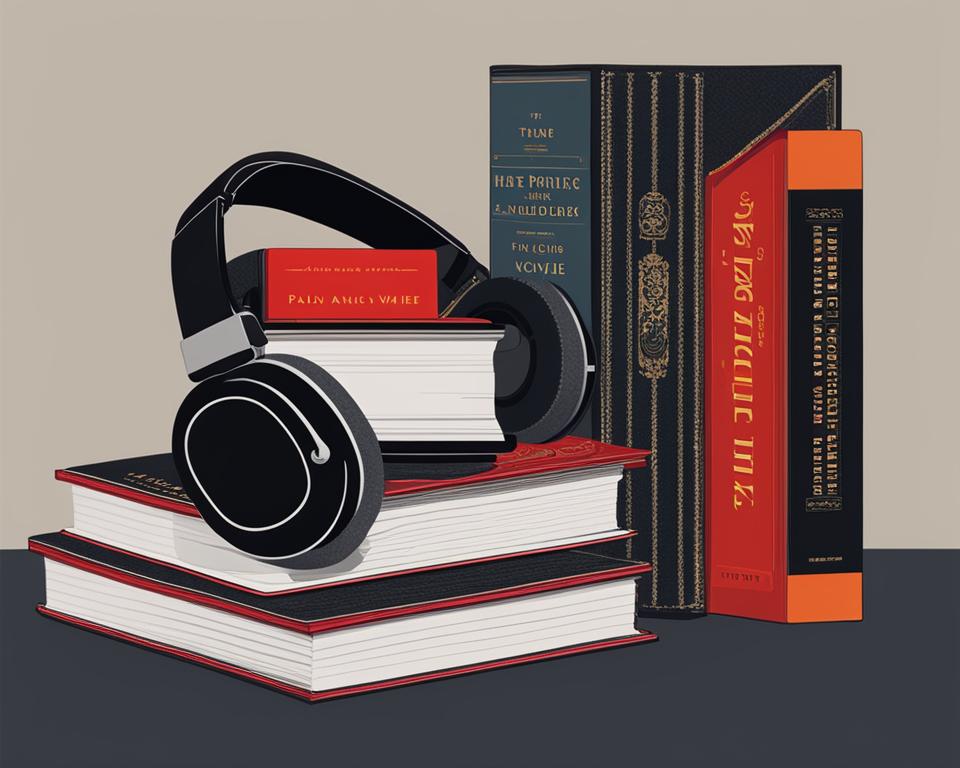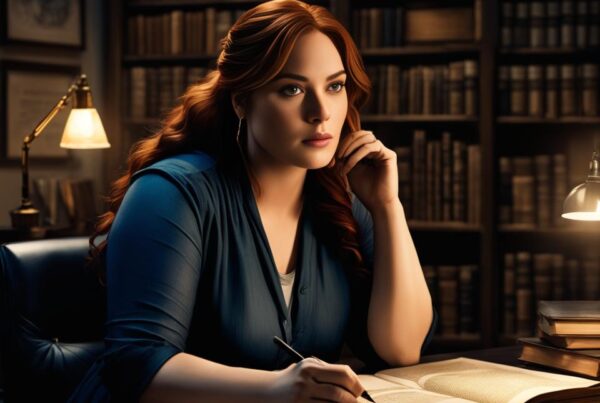If you’re looking for a gripping love story set in 1920s Paris, Paula McLain’s “The Paris Wife” audiobook edition might just be what you need. In this audiobook review, we’ll delve into the captivating love story, evaluate the narration, explore the writing style and character development, and more.
Key Takeaways:
- Paula McLain’s “The Paris Wife” audiobook edition offers a captivating love story set in 1920s Paris.
- The audiobook’s production quality and narration make for an engaging listening experience.
- The writing style offers unique storytelling techniques and attention to detail.
- The character development and underlying themes add depth to the story.
- Overall, “The Paris Wife” audiobook edition comes highly recommended for those looking for an immersive and well-crafted story.
About the Author
Paula McLain is an American author who has made a name for herself as a writer of historical fiction. She was born in Fresno, California, and grew up in a foster home before attending the University of Michigan, where she earned a degree in English and Classical Greek. McLain began her writing career as a poet, publishing two collections before switching to fiction.
Since then, McLain has become known for her vivid depictions of historical events and figures. Her previous works include “The Paris Wife,” “Love and Ruin,” and “Circling the Sun.” Through her writing, McLain brings the past to life, immersing readers in worlds that are long gone but never forgotten. She has been celebrated for her masterful character development and poetic prose.
Setting and Synopsis
In “The Paris Wife,” Paula McLain immerses readers in the dynamic ambiance of 1920s Paris. This vibrant city serves as the backdrop for a captivating love story that unfolds amidst the bohemian cafes, literary salons, and artistic enclaves of the era.
The novel introduces the protagonist, Hadley Richardson, a quiet, reserved woman who finds herself drawn to Ernest Hemingway, a charismatic and ambitious writer. As they navigate the intricacies of their budding relationship, they become entangled in the social and political complexities of the time.
Through McLain’s masterful storytelling, readers are transported to a world of passion, betrayal, and sacrifice, as the couple’s love is tested by the tumultuous events of the historical period. With richly drawn characters and exquisitely detailed descriptions of the setting, “The Paris Wife” is a poignant and captivating tale of love and loss in the City of Light.
Audiobook Narration
The audiobook edition of “The Paris Wife” is narrated by Carrington MacDuffie, who brings the characters to life with her exemplary performance. MacDuffie’s narration is clear, nuanced, and easily distinguishable for each character, allowing listeners to immerse themselves in the story.
MacDuffie perfectly captures the emotion and depth of each character, making it easy for the listeners to connect with them. Her pacing is also spot-on, creating an engaging listening experience. The overall production quality of the audiobook is top-notch, further adding to the immersive listening experience.
If you’re a fan of audiobooks, we highly recommend giving the audiobook edition of “The Paris Wife” a listen. You’ll be captivated by the narration and transported to 1920s Paris in no time.
Writing Style and Language
Paula McLain’s writing style in “The Paris Wife” is elegant and vivid, transporting the reader to the bustling streets of 1920s Paris through her masterful use of language. McLain’s attention to detail is impeccable, from the architecture of the buildings to the intricate outfits of the characters. Her descriptions of landscapes and surroundings are vivid, creating a cinematic experience for the reader.
One of the unique storytelling techniques McLain employs in the novel is the use of Hemingway’s voice to narrate the story. This perspective gives the reader an intimate view of the relationship between Hemingway and his first wife, Hadley Richardson, and allows us to witness their love story unfold through Hemingway’s eyes.
Overall, McLain’s writing style and language in “The Paris Wife” is a true work of art, painting a vivid picture of the glamorous and sometimes tumultuous world of 1920s Paris. It’s a must-read for anyone who appreciates great literature and storytelling.
Character Development
One of the greatest strengths of “The Paris Wife” is the excellent character development throughout the novel. Paula McLain skillfully portrays the evolution of the characters, particularly Hadley Richardson and Ernest Hemingway, as their relationship develops and their individual struggles are revealed.
Hadley is portrayed as a gentle and supportive partner to Hemingway, yet she also has her own inner demons to overcome. McLain’s attention to detail in portraying Hadley’s emotions, insecurities, and growth is impressive, and readers will become invested in her character as the novel progresses.
Hemingway, on the other hand, is portrayed as a passionate and ambitious writer, yet with a darker side to his personality. As his relationship with Hadley becomes strained, readers witness a change in his behavior and outlook on life, leading to a dramatic character arc that is both gripping and unsettling.
The supporting characters, such as Pauline Pfeiffer and Ezra Pound, are also well-developed and add depth to the story, creating a fully-realized world in 1920s Paris.
Overall, “The Paris Wife” is a masterclass in character development, with each character expertly crafted to create a nuanced and captivating story.
Themes and Messages
As readers delve deeper into “The Paris Wife,” they will uncover several underlying themes and messages that Paula McLain expertly weaves into the story. One significant theme is love and the complexities that come with it. Through her portrayal of the relationship between Hadley Richardson and Ernest Hemingway, McLain explores the sacrifices that individuals make for love and the challenges that arise in long-term partnerships.
Ambition is another significant theme in the novel, with McLain portraying the desire for success and recognition as both a driving force and a potential source of conflict. Through her detailed descriptions of the expat community in 1920s Paris, McLain touches on the themes of self-discovery and artistic expression.
“I wished I could walk through the rooms of our life like a snoop and see what we’d been, what was worth keeping, what no longer served.” – Paula McLain
Throughout the novel, characters are forced to confront the sacrifices they must make to achieve their ambitions and balance their personal lives with their creative pursuits. Finally, McLain’s portrayal of 1920s Parisian society encompasses themes of gender roles, class dynamics, and societal expectations.
Overall, “The Paris Wife” serves as a thought-provoking exploration of love, ambition, and the human experience. McLain’s skillful writing and intricate character development make for a truly captivating read or listen, with themes that will linger long after the final chapter.
Reception and Impact
Since its release, “The Paris Wife” has received widespread critical acclaim and has had a lasting impact on readers around the world. The novel has been praised for its beautiful writing style, vivid portrayal of 1920s Paris, and captivating love story.
The book has received numerous awards and accolades, including the 2012 Anisfield-Wolf Book Award for fiction and a 2012 Goodreads Choice Award for historical fiction. Additionally, it has been a New York Times bestseller and has been translated into over 30 languages.
Readers have been moved by the emotional depth and complexity of the characters, particularly protagonist Hadley Richardson. McLain’s vivid descriptions of Parisian life in the 1920s have transported readers to another time and place, allowing them to fully immerse themselves in the story.
“The Paris Wife” has left a lasting impact on readers, not only for its compelling story but also for its examination of the sacrifices and compromises that come with love and ambition. It is a beautiful and poignant novel that will continue to be cherished by readers for years to come.
Comparison with the Print Edition
If you are deciding between the print edition and audiobook edition of “The Paris Wife,” it’s worth noting a few differences in the reading experience. One advantage of the audiobook edition is the immersive narration by Carrington MacDuffie, who brings the story to life with her excellent voice acting. Additionally, listening to the audiobook allows the listener to multitask, such as driving or exercising, without having to hold a physical book.
However, some readers may prefer the print edition for a more traditional reading experience. The print edition allows readers to visually engage with the text and flip back and forth between pages if needed. It may also be easier to take notes or highlight passages in the print edition.
Ultimately, the decision between the print edition and audiobook edition will depend on personal preference and reading habits. It’s recommended to try both formats and see which works best for you.

Conclusion
In conclusion, “The Paris Wife” by Paula McLain is a captivating love story that transports listeners to 1920s Paris. The audiobook edition elevates the reading experience, thanks to the excellent narration by Carrington MacDuffie. Her performance brings the characters to life and immerses listeners in the story.
McLain’s writing style and attention to detail are masterful, creating a vivid portrayal of Parisian society in the 1920s. Her characters are well-developed, and their growth and relationships throughout the story add depth and emotion.
The themes explored in “The Paris Wife” offer a thought-provoking commentary on love, ambition, and sacrifice, leaving a lasting impact on listeners.
Overall, we highly recommend the audiobook edition of “The Paris Wife” to fans of historical fiction and romance. However, readers who prefer the print edition may miss out on the excellent narration by Carrington MacDuffie offered in the audiobook.



